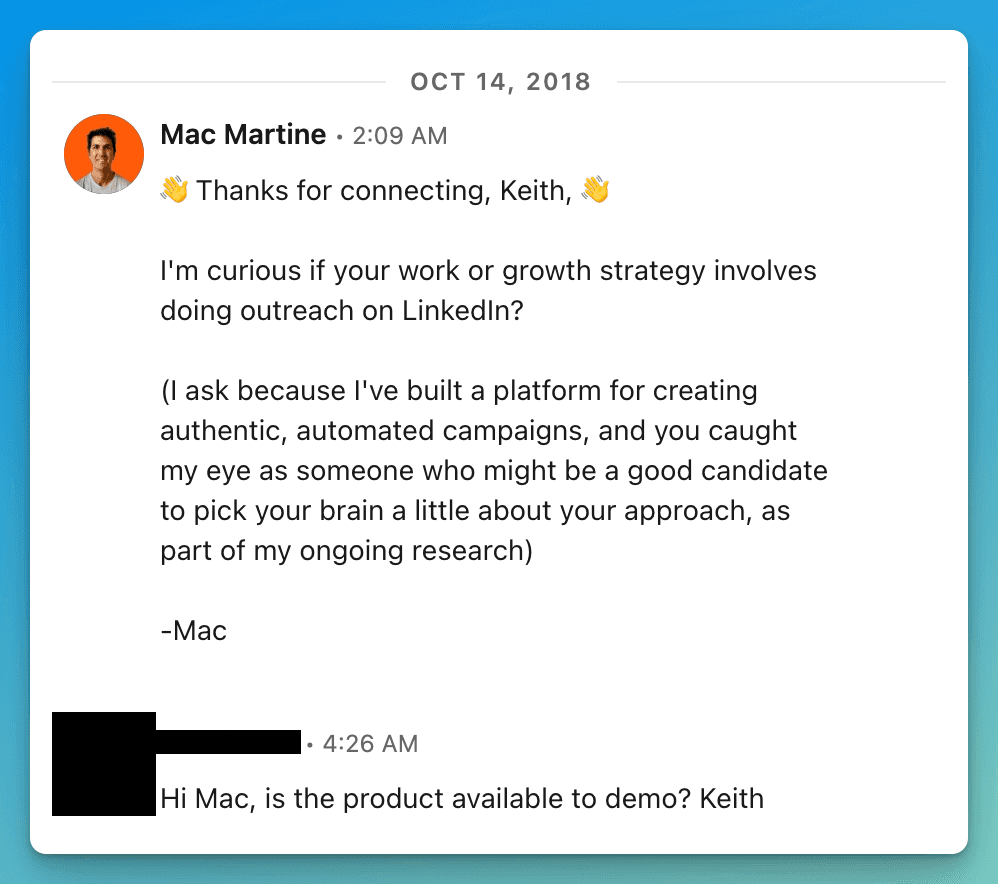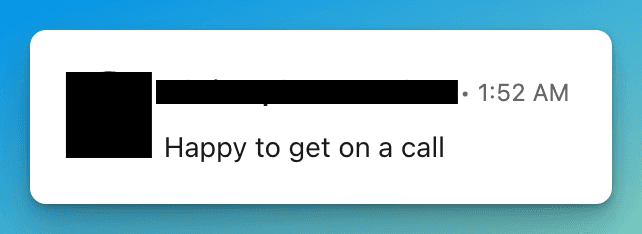How to get your first five customers
The barriers of selling
Selling an offering boils down to two things: building trust and solving a pain point.
Barrier 1: Building trust
At a basic level, the best way to build trust is through relationships. The deeper the relationship, the more potential trust. Your friends trust you, strangers, not so much.
Consider it from a buyer’s perspective. If you were in the market for a used car, would you be more likely to consider buying from a friend or a stranger?
To clarify some terminology: people that who know and trust you are considered ‘warm’ leads, and those who don’t, are ‘cold’ leads.
We, therefore, start our process of selling with our warm leads, while constantly turning cold leads into warm ones.
The process of building trust from cold leads can be done through introductions/referrals from those who already trust us, but we can also build trust with strangers by creating connections through communication, or by offering free content, information, or tools.
Barrier 2: Solving a pain
The best way to ensure we are solving a pain point is by deeply understanding our customers and their pain.
This is best done through conversation.
The more people we talk to, the more we will understand the pain, the words they use to describe that pain, and the profile of the people who have this pain.
The process
If we examine these two goals, of building trust and understanding a pain point, we can see a clear overlap in how to best accomplish this.
By having conversations with people, we are both gaining insights into their pains and the problems we can solve, as well as building trust and converting cold leads into warm leads.
This one process solves many of our early stage problems, from finding our target customer, understanding their pain, and the words they use to describe it which essentially writes our messaging for us.
This is all very hands-on at the early stages, and over time we can figure out how to scale it, but we don’t worry about that yet.
How I did it
Here’s what this looked like for me in 2018, for an app I grew to $61k MRR and then sold.
The conversations started not when I was looking to acquire customers, but when I was looking for a pain to solve. But note that the process was the same - I started with people who knew me.
I started by sending messages to friends and acquaintances, asking if I could pick their brains about their work processes. I wanted them to meet me for coffee.
Note I did not need to offer them anything in return, though I did pay for whatever they ordered when we met.
I also started cold outreach early on too, to gather information and create warm leads through a low-risk ask:



Even of these strangers, many of the people I asked happily accepted.
When it comes down to it, most people love this. It makes them feel important, and let’s face it, people like to talk about themselves.
After picking their brains, I would ask for introductions to other people they thought I should talk to. By doing this, there’s a built-in sense of trust when you get referred to someone through a mutual connection, so these people are also very willing to talk.
I repeated this process for some time, until I felt like I had the information I was looking for.
Converting leads
After having found an idea I wanted to pursue further, I spent four weeks building it.
At this point, I had dozens of warm leads, some of which had been cold just weeks earlier. I reached back out them and several of them converted into paying customers.
And there you have it - my first 5 customers.
Far more than 5.
This process even resulted in a very early acquisition offer - someone invited me to come to their town, put me up for a couple of days, and discuss an acquisition.
From there, when I look at my first five customers, it turns out that I knew none of them when I started this process, but by the time I launched, they were all very warm leads. Some of them even felt like new friends.
Summary
To summarize, by having conversations not when we’re trying to sell them something, but when we’re still honing in on our idea, we’re building trust and creating warm leads through low-risk, low-stakes offer to pick their brain or get feedback.
By doing this, we’re also getting to know our customer profile and pain points better.
When it comes time to sell, we’ve built trust and likely have a solution to help them that no longer needs explanation.
When it comes time to scale, we know the roles and titles of these people, as well as the words they use which become our product and marketing messaging.
I’m about to go through a similar process with SaaS Pulse, a project I’m launching soon.
Stay tuned to see how that goes.